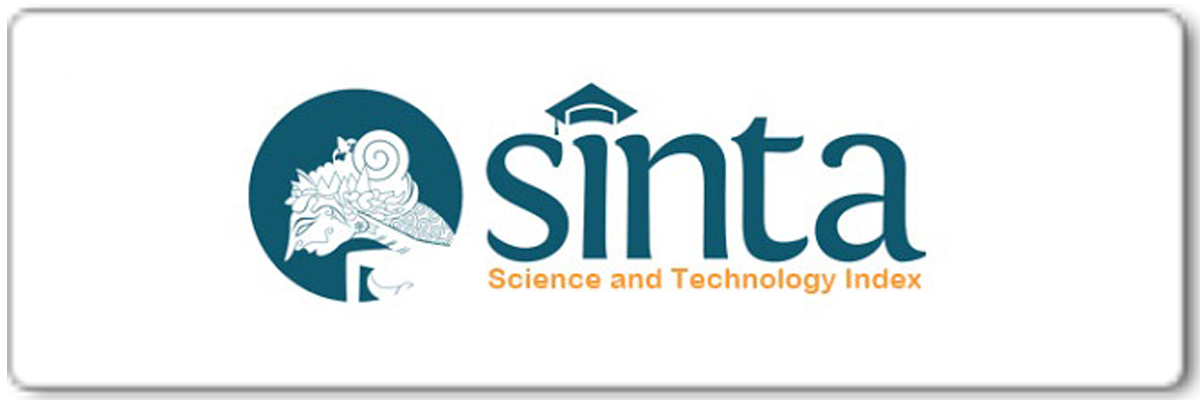Integrating the use of social media for group collaboration in ESP classroom
Abstract
Keywords
Full Text:
PDFReferences
Ahmed, Babikir Eltigani Siddig. “Social Media in Teaching of Languages.” International Journal of Emerging Technologies in Learning, vol. 15, no. 12, 2020, pp. 72–80, doi:10.3991/ijet.v15i12.12645.
Akhiar, Ayuni, et al. “Students’ Perceptions and Attitudes towards the Use of Instagram in English Language Writing.” Malaysian Journal of Learning and Instruction, no. Specialissue, 2017, pp. 47–72, doi:10.32890/mjli.2017.7796.
Al-Rahmi, Waleed Mugahed, et al. “The Improvement of Students’ Academic Performance by Using Social Media through Collaborative Learning in Malaysian Higher Education.” Asian Social Science, vol. 10, no. 8, 2014, pp. 210–21, doi:10.5539/ass.v10n8p210.
Al-Rahmi, Waleed Mugahed, and Akram M. Zeki. “A Model of Using Social Media for Collaborative Learning to Enhance Learners’ Performance on Learning.” Journal of King Saud University-Computer and Information Sciences, vol. 29, no. 4, Elsevier, 2017, pp. 526–35, doi:10.1016/j.jksuci.2016.09.002.
Aloraini, Nouf. “Investigating Instagram as an EFL Learning Tool.” Arab World English Journal (AWEJ) Special Issue on CALL, no. 4, 2018.
Aloraini, Nouf, and Walcir Cardoso. “Social Media in Language Learning: A Mixed-Methods Investigation of Students’ Perceptions.” Computer Assisted Language Learning, Routledge, 2020, pp. 1–24, doi:10.1080/09588221.2020.1830804.
Borau, Kerstin, et al. “Microblogging for Language Learning: Using Twitter to Train Communicative and Cultural Competence.” Lecture Notes in Computer Science (Including Subseries Lecture Notes in Artificial Intelligence and Lecture Notes in Bioinformatics), vol. 5686 LNCS, no. 500, 2009, pp. 78–87, doi:10.1007/978-3-642-03426-8_10.
Braun, Virginia, and Victoria Clarke. “Qualitative Research in Psychology Using Thematic Analysis in Psychology Using Thematic Analysis in Psychology.” Qualitative Research in Psychology, vol. 3, no. 2, 2006, pp. 77–101, http://www.tandfonline.com/action/journalInformation?journalCode=uqrp20%5Cnhttp://www.tandfonline.com/action/journalInformation?journalCode=uqrp20.
Chawinga, Winner D., and Sandy Zinn. “Use of Web 2.0 by Students in the Faculty of Information Science and Communications at Mzuzu University, Malawi.” South African Journal of Information Management, vol. 18, no. 1, AOSIS, 2016, pp. 1–12.
Chawinga, Winner Dominic. “Taking Social Media to a University Classroom: Teaching and Learning Using Twitter and Blogs.” International Journal of Educational Technology in Higher Education, vol. 14, no. 3, International Journal of Educational Technology in Higher Education, 2017, pp. 1–19, doi:10.1186/s41239-017-0041-6.
Creswell, John W., and Vicki L. Plano Clark. Designing and Conducting Mixed Methods Research. Sage publications, 2017.
Dewi, Puspita, and Abdul Muhid. “Students’ Attitudes towards Collaborative Learning through E-Learning During Covid-19: A Male and Female Students.” English Teaching Journal: A Journal of English Literature, Language and Education, vol. 9, no. 1, 2021, pp. 26–33.
Erarslan, Ali. “Instagram as an Education Platform for EFL Learners.” Turkish Online Journal of Educational Technology-TOJET, vol. 18, no. 3, ERIC, 2019, pp. 54–69.
Faizi, Rdouan, et al. “Exploring the Potential Benefits of Using Social Media in Education.” International Journal of Engineering Pedagogy (IJEP), vol. 3, no. 4, 2013, pp. 50–53, doi:http://dx.doi.org/10.3991/ijep.v3i4.2836.
Gikas, Joanne, and Michael M. Grant. “Mobile Computing Devices in Higher Education: Student Perspectives on Learning with Cellphones, Smartphones & Social Media.” Internet and Higher Education, vol. 19, Elsevier Inc., 2013, pp. 18–26, doi:10.1016/j.iheduc.2013.06.002.
Greenhow, Christine. “Youth, Learning, and Social Media.” Journal of Educational Computing Research, vol. 45, no. 2, SAGE Publications Sage CA: Los Angeles, CA, 2011, pp. 139–46.
Hoffman, Ellen. Social Media and Learning Environments: Shifting Perspectives on the Locus of Control. University of Regina, Faculty of Education, 2009.
Hung, Min-Ling, and Chien Chou. “Students’ Perceptions of Instructors’ Roles in Blended and Online Learning Environments: A Comparative Study.” Computers & Education, vol. 81, Elsevier, 2015, pp. 315–25.
Jones, Andy. “How Twitter Saved My Literature Class: A Case Study with Discussion.” Teaching Arts and Science with the New Social Media, edited by Charles Wankel, vol. 3, Emerald Group Publishing Limited, 2011, pp. 91–105, doi:10.1108/S2044-9968(2011)0000003008.
Kassens-Noor, Eva. “Twitter as a Teaching Practice to Enhance Active and Informal Learning in Higher Education: The Case of Sustainable Tweets.” Active Learning in Higher Education, vol. 13, no. 1, SAGE Publications Sage UK: London, England, 2012, pp. 9–21, doi:10.1177/1469787411429190.
Lailiyah, Malikhatul, et al. “Assessing an Effective Collaboration in Higher Education: A Study of Students’ Experiences and Challenges on Group Collaboration.” EnJourMe (English Journal of Merdeka): Culture, Language, and Teaching of English, vol. 6, no. 2, 2021, pp. 97–105.
Lailiyah, Malikhatul, and Lian Agustina Setiyaningsih. Students’ Perception of Online Communication Language Learning through Instagram. no. 2, 2020, pp. 188–95, doi:10.26905/enjourme.v5i2.5202.
Liu, Qian, et al. “Understanding Academics’ Adoption of Learning Technologies: A Systematic Review.” Computers & Education, vol. 151, Elsevier, 2020, p. 103857, doi:https://doi.org/. 10.1016/j.compedu.2020.103896.
Liu, Youmei. “Social Media Tools as a Learning Resource.” Journal of Educational Technology Development and Exchange, vol. 3, no. 1, 2010, doi:10.18785/jetde.0301.08.
Moghavvemi, Sedigheh, et al. “Social Media as a Complementary Learning Tool for Teaching and Learning: The Case of Youtube.” International Journal of Management Education, vol. 16, no. 1, 2018, pp. 37–42, doi:10.1016/j.ijme.2017.12.001.
Mondahl, Margrethe, and Liana Razmerita. “Social Media, Collaboration and Social Learning – a Case-Study of Foreign Language Learning.” The Electronic Journal of E-Learning, vol. 12, no. 4, 2014, pp. 339–52, doi:10.7748/ns2012.09.27.3.31.p9397.
Orús, Carlos, et al. “The Effects of Learner-Generated Videos for YouTube on Learning Outcomes and Satisfaction.” Computers & Education, vol. 95, Elsevier, 2016, pp. 254–69.
Osgerby, Julia, and David Rush. “An Exploratory Case Study Examining Undergraduate Accounting Students’ Perceptions of Using Twitter as a Learning Support Tool.” The International Journal of Management Education, vol. 13, no. 3, Elsevier, 2015, pp. 337–48.
Othman, Mohd Shahizan. “Evaluating Student ’ S Satisfaction of Using Social Media Through.” International Journal of Advances in Engineering & Technology, no. August, 2017, p. 12.
Purvis, Alison J., et al. “Experiences and Perspectives of Social Media in Learning and Teaching in Higher Education.” International Journal of Educational Research Open, vol. 1, no. October, Elsevier Ltd, 2020, p. 100018, doi:10.1016/j.ijedro.2020.100018.
Razmerita, Liana, and Kathrin Kirchner. “Collaboration and E-Collaboration: A Study of Factors That Influence Perceived Students’ Group Performance.” 2015 48th Hawaii International Conference on System Sciences, IEEE, 2015, pp. 33–42, doi:10.1007/978-3-319-10166-8_25.
Sari, Fatimah Mulya, and Achmad Yudi Wahyudin. “Undergraduate Students’ Perceptions toward Blended Learning through Instagram in English for Business Class.” International Journal of Language Education, vol. 3, no. 1, ERIC, 2019, pp. 64–73, doi:10.26858/ijole.v1i1.7064.
Tseng, Hungwei, et al. “Key Factors in Online Collaboration and Their Relationship to Teamwork Satisfaction.” Quarterly Review of Distance Education, vol. 10, no. 2, 2009.
Wakefield, Jenny S., et al. “Learning and Teaching as Communicative Actions: A Mixed-Methods Twitter Study.” Knowledge Management and E-Learning, vol. 3, no. 4, 2011, pp. 563–84, doi:10.34105/j.kmel.2011.03.038.
Yusuf, Kamal, and Nikmatul Jazilah. Exploring Creativity in English Writing by Using Instagram : University Students Perceptions. no. 2, 2020, pp. 80–88, doi:10.32332/pedagogy.v8i1.
Article Metrics
Abstract has been read : 588 timesPDF file viewed/downloaded: 0 times
DOI: http://doi.org/10.25273/etj.v10i1.11716
Refbacks
- There are currently no refbacks.
Copyright (c) 2022 Malikhatul Lailiyah, Suatmo Pantja Putra

This work is licensed under a Creative Commons Attribution-NonCommercial-ShareAlike 4.0 International License.
English Teaching Journal: A Journal of English Literature, Language and Education indexed by:
This work is licensed under a Creative Commons Attribution-NonCommercial-ShareAlike 4.0 International License.







